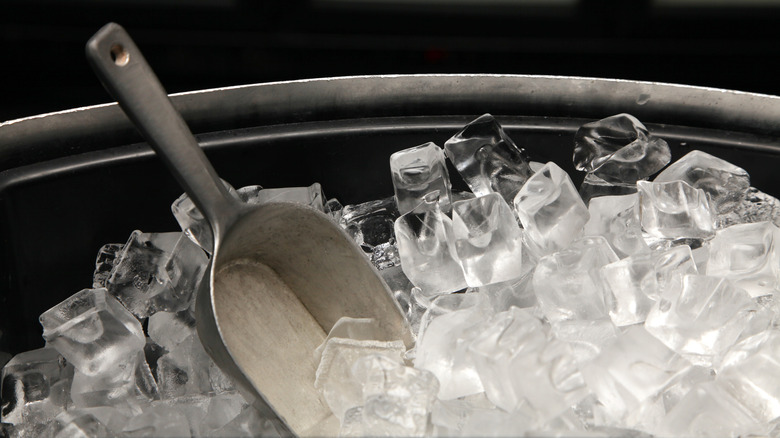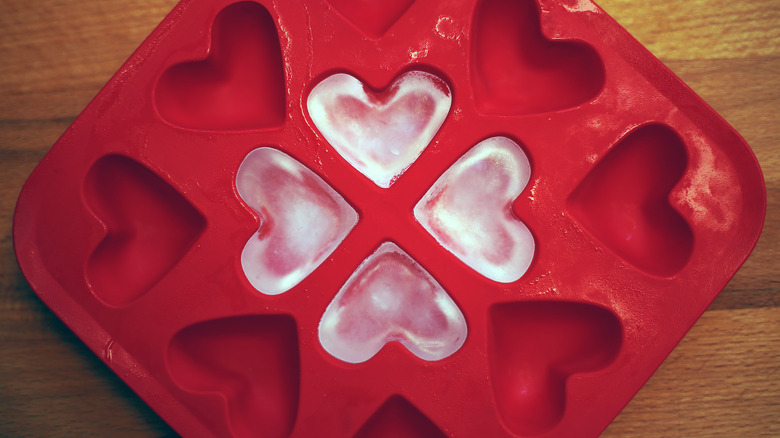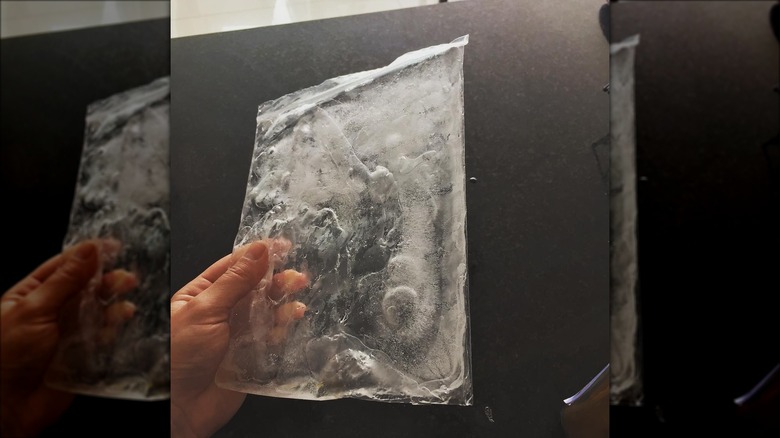The Best Way To Make Ice Cubes Without A Tray
Running out of ice during a party is everyone's biggest fear, and when your fridge doesn't have a built-in ice maker and you're without an ice tray, there are a few items in your kitchen that can help fill the gap.
The easiest option is to use a silicone mold. These are often used to shape chocolate, cookies, or candies, and are typically sold in baking supply stores. All you need to do is pour water inside the compartments and let it freeze (and maybe use some of these tips to make the process faster).
Before using molds, though, you should verify that they are food-safe and can hold up to freezing temperatures. Unsafe silicone can contain toxic fillers like BPA or lead, which could then leach into the ice as it freezes. Otherwise, the flexible silicone of food-grade products will make it easy to pop out individual pieces of ice. And, as a bonus, they can make some fun-shaped to add a little whimsy to your drinks.
Other kitchen items can be used for ice cubes, too
Metal muffin tins are significantly more rigid than flexible molds, and can also be used to shape ice in a pinch. And, they can help you make fancy cocktail ice without a silicone mold. Simply fill each compartment with water, allow it to freeze, and then use the larger cubes to cool your drinks. If the ice is stuck in the tray, a little bit of hot water can be poured on top to help it separate. Or, turn the tin over and tap the bottom to release.
Egg cartons are another idea. After you are done cooking eggs, save the container and use it for making ice. Styrofoam cartons are what work here since they are waterproof, so each compartment can be filled and frozen. But, the container will need to be thoroughly cleansed with soap and water prior to making ice in order to eliminate risks of contamination.
Paper egg cartons hold the right shape, but the material isn't waterproof. To get around this, small pieces of tin foil can be used to line each divot. The water can then be poured into the shaped foil and frozen. Both of these options will produce larger-sized ice cubes. So if you prefer smaller crushed ice, you may want to explore using bags.
Bags can be beneficial for smaller ice chunks
One of the easiest ways to make crushed ice is to freeze some water in a resealable plastic bag. These come in a variety of sizes, so you can use the option that best fits in your freezer. Fill the bag partially with water, seal it tight, and lay it flat as it freezes. Bags that are labeled for freezer use are generally a little thicker than non-freezer bags. This will ensure that all the water stays securely inside and doesn't leak out.
Once it's frozen, lay the bag out on the counter, and crush the ice up into smaller chunks with a rolling pin until it reaches your desired shape and size. If you want larger pieces, you can use your hands to bend and break the ice sheet instead.
If you simply don't have the space for an ice tray, you can also purchase water-filled reusable ice cubes. The small cubes can be kept in a bag and stored anywhere in the freezer to save space. Or, if you find yourself in need of ice more often than not, it may be worthwhile to invest in a countertop ice maker.



